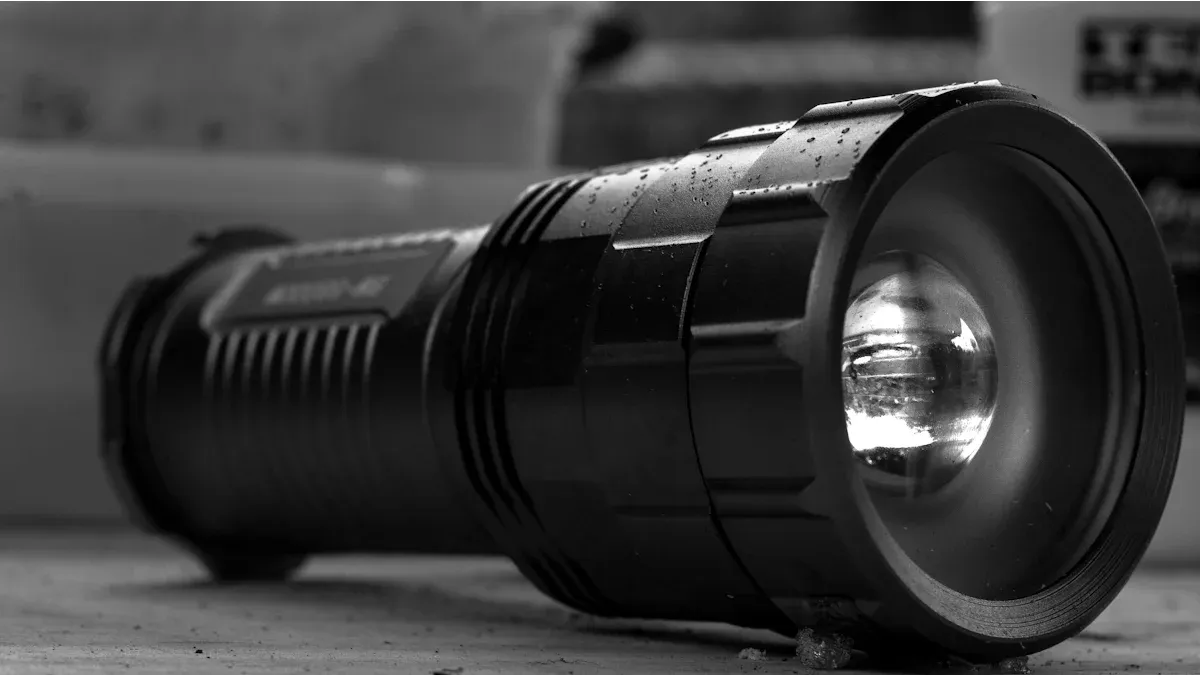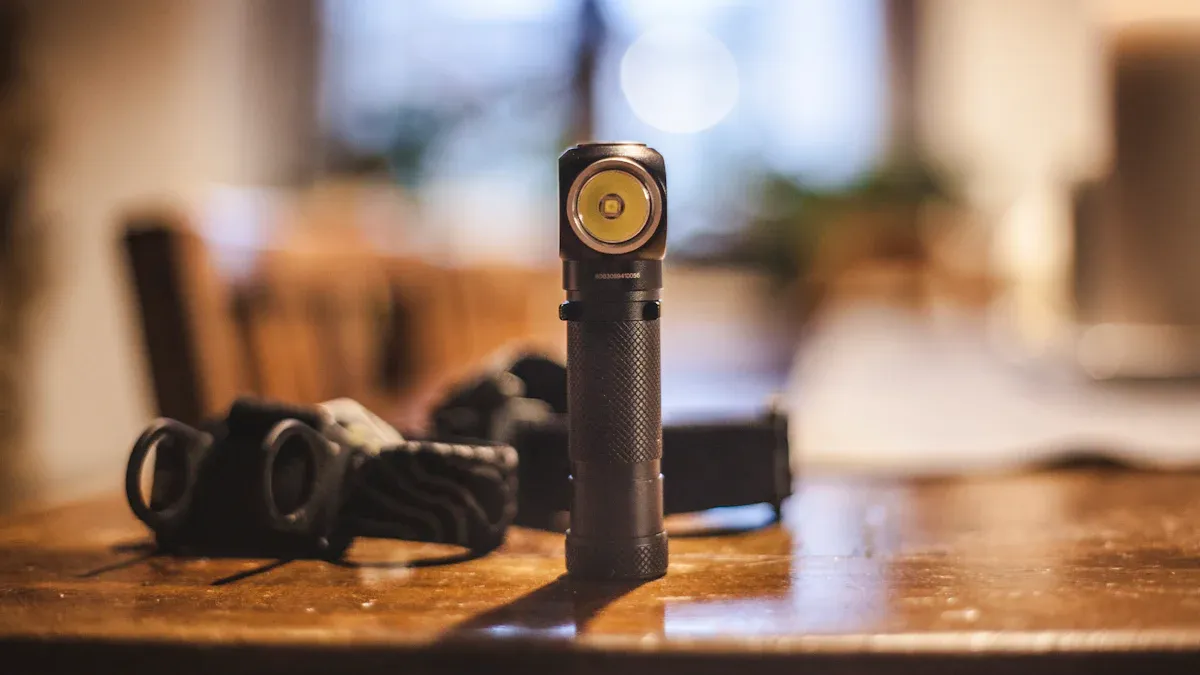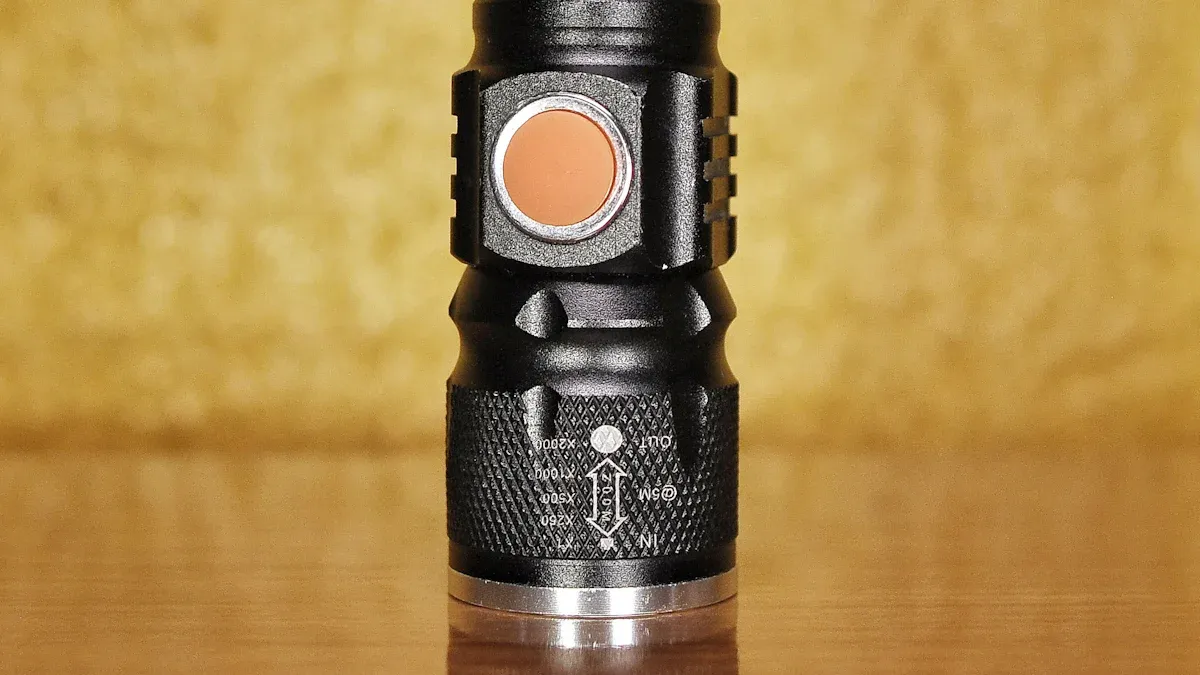The Importance of Battery Life in Flashlights for Emergency Situations

In emergencies, having reliable supplies can make a critical difference. Flashlights are among the most essential emergency supplies you should have. Their importance becomes clear when power outages or natural disasters strike. However, the flashlight's battery life determines its reliability. A dead flashlight during a crisis can leave you vulnerable. The helius flashlight, known for its durability and long-lasting battery life, ensures you stay prepared when it matters most.
Key Takeaways
Pick flashlights with lasting batteries for steady light in emergencies.
Check and care for your flashlight often to keep it ready.
Keep flashlights and batteries stored safely to avoid harm and ensure they work.
Why Battery Life is Crucial in Emergency Flashlights

The importance of flashlights in emergencies
Flashlights are essential tools in any emergency preparedness kit. They provide critical illumination when power outages occur, helping you navigate safely in the dark. Whether during a natural disaster or a sudden blackout, flashlights ensure you can see your surroundings clearly. Reliable emergency lighting prevents accidents, such as tripping over obstacles, and allows you to locate essential items quickly. Including a flashlight in your kit is a simple yet effective way to enhance your power outage preparedness.
Risks of flashlight failure during emergencies
A flashlight with poor battery life can fail when you need it most. This failure can leave you vulnerable in dangerous situations, such as during a disaster or while evacuating in the dark. Without proper lighting, you risk injuries from unseen hazards or delays in finding safety. Additionally, the absence of light can increase anxiety and reduce your ability to make quick decisions. A flashlight with life-saving power and long battery life is crucial to avoid these risks and ensure your safety.
Benefits of long-lasting battery life for preparedness
A flashlight with long battery life offers several advantages. It provides immediate illumination during emergencies, ensuring you can act quickly and confidently. Long-lasting flashlights also reduce the need for frequent battery replacements, saving you time and resources. Moreover, reliable emergency lighting offers psychological comfort by reducing stress and creating a sense of security. By choosing a flashlight with extended battery life, you can stay prepared for any situation, from power outages to natural disasters.
Key Factors Affecting Flashlight Battery Life
Impact of usage patterns and light modes
How you use your flashlight significantly impacts its battery life. High-intensity light modes consume more power compared to lower settings. For example, using a flashlight on its brightest mode for extended periods drains the battery faster. Switching to energy-efficient modes, such as low or strobe, can help conserve power. You should also turn off the flashlight when it’s not in use to avoid unnecessary battery depletion.
Environmental factors like temperature and humidity
Extreme temperatures and humidity levels can affect flashlight performance. Cold weather, in particular, reduces the efficiency of certain batteries. Alkaline batteries may stop functioning effectively below 20°F, while lithium-ion batteries perform better in a wider range, from -40°F to 140°F. High humidity can also corrode battery contacts, leading to reduced reliability. Storing flashlights in a dry, temperature-controlled environment can help mitigate these issues.
Role of battery type and quality
The type and quality of batteries you choose play a crucial role in determining how long your flashlight lasts. Long-lasting batteries, such as lithium-ion, are more reliable and perform better under stress compared to alkaline options. High-quality batteries also provide consistent power output, ensuring your flashlight remains dependable during emergencies. Investing in premium batteries can save you from unexpected failures.
Influence of charging and maintenance habits
Improper charging habits can shorten the lifespan of rechargeable batteries. Overcharging generates excessive heat, which damages battery cells and reduces their longevity. It can also pose safety risks, such as leakage or rupture. To maximize battery life, you should use chargers with automatic shut-off features and avoid leaving batteries plugged in for extended periods. Regular maintenance, such as cleaning battery contacts, ensures optimal performance.
Practical Tips to Maximize Flashlight Battery Life
Best practices for charging rechargeable batteries
Proper charging habits can significantly extend the lifespan of your flashlight batteries. Follow these best practices:
Fully discharge batteries before recharging to avoid the memory effect.
Use a charger designed specifically for your battery type to ensure optimal performance.
Charge lithium-ion batteries at a controlled rate to prevent overheating or overcharging.
Avoid interrupting the charging process once it begins.
Choose chargers with overcharge protection features to prevent damage.
Keep batteries away from extreme temperatures during charging.
Avoid over-discharging batteries, as it can cause irreversible damage.
By following these steps, you can ensure your flashlight remains reliable when you need it most.
Proper storage of flashlights and batteries
Storing your flashlights and batteries correctly helps maintain their performance. Keep flashlights in a cool, dry place to prevent moisture damage. Store batteries separately if the flashlight will not be used for an extended period. This prevents corrosion and leakage. Use airtight containers to protect batteries from humidity. Regularly check stored batteries for signs of wear or damage. Proper storage ensures your flashlight is ready for emergencies.
Using energy-efficient modes to conserve power
Energy-efficient modes on flashlights, such as strobe or low-light settings, help conserve battery power. These modes reduce energy consumption by using techniques like Pulse Width Modulation (PWM) or smooth DC current. Strobe settings, for example, take advantage of the human eye's ability to perceive fast flashes as continuous light. Using these modes extends battery life and ensures your flashlight lasts longer during emergencies.
Regular testing and maintenance for reliability
Testing your flashlight regularly ensures it works when needed. Turn it on periodically to check the battery level and light output. Clean the battery contacts to remove dirt or corrosion. Replace old batteries with fresh ones to avoid unexpected failures. Regular maintenance keeps your flashlight in top condition, maximizing battery life and ensuring reliability in critical situations.
Tip: Always keep alternative lighting options, like battery-operated lights, as backups in your emergency kit.
How to Choose the Best Flashlight for Emergencies

Features to look for: battery life, durability, and multi-mode functionality
When selecting a flashlight for emergencies, focus on key features that enhance its reliability. Look for models with long battery life to ensure dependable lighting during extended power outages. Brightness is another critical factor. A flashlight with at least 200 lumens works well indoors, while 500 lumens or more is ideal for outdoor use. Durability is essential for disaster scenarios. Choose flashlights made from sturdy materials like aluminum or stainless steel. Water resistance, with an IP rating of IPX4 or higher, ensures functionality in wet conditions. Multi-mode functionality, such as strobe or low-light settings, helps conserve power and adapt to different situations.
Comparing disposable and rechargeable battery options
The choice between disposable and rechargeable batteries depends on your needs. Rechargeable batteries offer higher power capacity and lower long-term costs. They are also more environmentally friendly due to their extended lifespan. However, they require electricity to recharge, which can be a limitation during power outages. Disposable batteries, on the other hand, are lightweight and convenient for short-term use. They are readily available and do not need recharging. For emergency preparedness, consider keeping both options in your kit to ensure reliable battery power in any situation.
Why the helius flashlight is a reliable choice
The helius flashlight stands out as a dependable option for emergencies. Its robust design ensures durability, making it suitable for disaster relief scenarios. It is waterproof and shockproof, allowing it to function in unpredictable weather conditions. The helius flashlight also features a bright beam and long-lasting battery life, providing reliable illumination when you need it most. Including it in your emergency kit guarantees you have a trustworthy tool for navigating dark or hazardous environments.
Reliable flashlights are essential for your emergency preparedness. Prioritizing battery life ensures dependable lighting during critical moments. High-performance batteries, like lithium options, offer longer runtime and durability, making them ideal for demanding situations. Including well-maintained flashlights in your emergency supplies guarantees safety during power outages or outdoor mishaps. Regular maintenance ensures they work when needed most.
Tip: Choose flashlights with long-lasting power and durability to stay prepared for any emergency.
FAQ
How often should you test your flashlight for emergencies?
You should test your flashlight every month. This ensures it works properly and the batteries are charged or replaced if needed.
What type of batteries last the longest in flashlights?
Lithium-ion batteries last longer than alkaline ones. They perform better in extreme temperatures and provide consistent power during emergencies.
Can you store flashlights with batteries inside?
It’s better to store batteries separately. This prevents corrosion and leakage, which can damage your flashlight over time.
See Also
Maximize Your Flashlight's Battery Life With These Tips
Key Guidelines for Proper Flashlight Care and Maintenance
Why Rechargeable Flashlights Are Crucial for Community Safety
Our Emergency Flashlight: Designed for Exceptional Durability
Comparing Home Flashlights: Brightness, Longevity, and Strength
